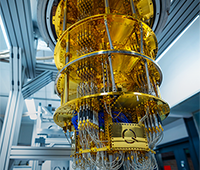Ancient Creatures had Powerful Eyes
 |
Scientists have discovered that some ancient, primitive animals had excellent vision. Evidence comes from Kangaroo Island fossils that are over 500 million years old and look like squashed eyes from a recently swatted fly.
“Our Nature paper reports extremely well-preserved fossil eyes from Early Cambrian (approximately 515 million years old) rocks from Emu Bay on Kangaroo Island,” says UniSA palaeontologist Jim Jago, who was part of the research team. “These are by far the most complicated eyes known from this period of earth’s history. Each eye is seven to nine millimeters across and comprises over 3000 tiny lenses.
“As yet, the animal to which these eyes belonged is unknown, but they may have belonged to a large shrimp-like animal. However, the rock layers in which the eyes are preserved include a dazzling array of fossil marine animals, many being new to science. They include primitive trilobite-like creatures, bizarre armored worms and large swimming predators.”
The discovery has been revealed in the journal Nature in a paper titled: ‘Modern optics in exceptionally preserved eyes of Early Cambrian arthropods from Australia’. Authors are Michael Lee from the SA Museum and University of Adelaide, Jago, Jim Gehling from SA Museum, John Paterson from the University of New England, Diego Garcia-Bellido from Madrid and Greg Edgecome from the Natural History Museum in London.
Jago says modern insects and crustaceans have ‘compound eyes’ comprising hundreds or even thousands of individual lenses. “They see their world as pixels, with more lenses meaning sharper vision,” he says.
“The fossil compound eyes have over 3000 lenses, giving them much sharper vision than anything previously found from rocks this old. The eyes are much more complex than anything found previously in rocks of similar age. The newly discovered eyes are as advanced as the eyes in many living insects, such as robberflies. The arrangement and size of the lenses indicates that these eyes belonged to an active predator that was capable of seeing in low light.”
The Nature paper reports these eyes provide evidence that the rapid development of advanced vision helped drive the Cambrian explosion of life that began around 540 million years ago, the time when most modern animal groups first appeared and proliferated in the oceans of the Earth. Given the tremendous adaptive advantage conferred by powerful eyes for avoiding predators and locating food and shelter, there must have been tremendous evolutionary pressure to elaborate and refine vision, the scientists report.



